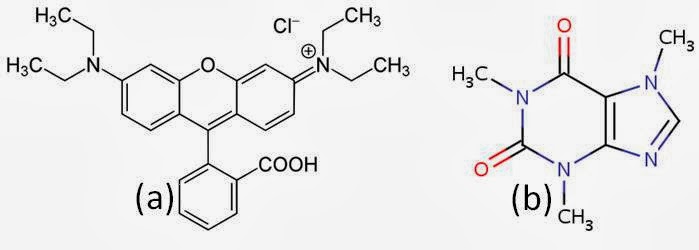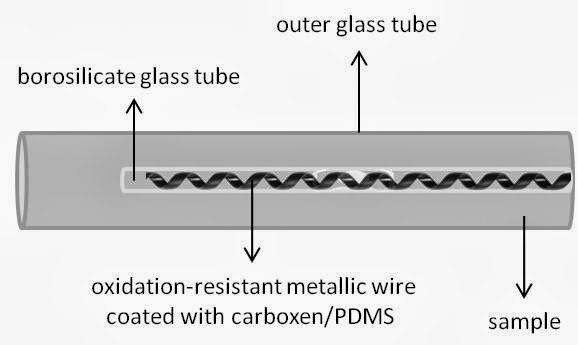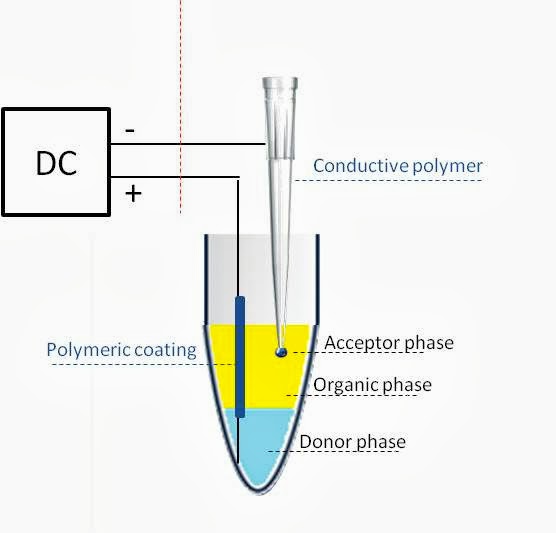Carbon nanotubes membrane for caffeine determination in biological fluids

The use of nylon membranes modified with carbon nanotubes (CNTs) for the determination of caffeine in biological fluids has been proposed by researchers from San Luis University at Argentina (1). The proposed configuration is based on the retention of the analyte into the modified membrane and its in-surface determination by means of solid surface fluorescence (SSF). Although caffeine is not a fluorescent molecule, this methodology takes advantage of the interaction between caffeine and Rhodamine B which produces an enhancement of the native fluorescence of this dye. (a) Rhodamine B (b) Caffeine Modified membranes are easily fabricated by impregnation of the bare membranes with a solution that contains Rhodamine B, activated CNTs and hexadecyltrimethylammonium bromide (HTAB), the latter being a cationic surfactant employed for CNTs dispersion. After a drying step the membranes are ready to isolate caffeine from biological samples. The extraction procedure makes use of a fl

